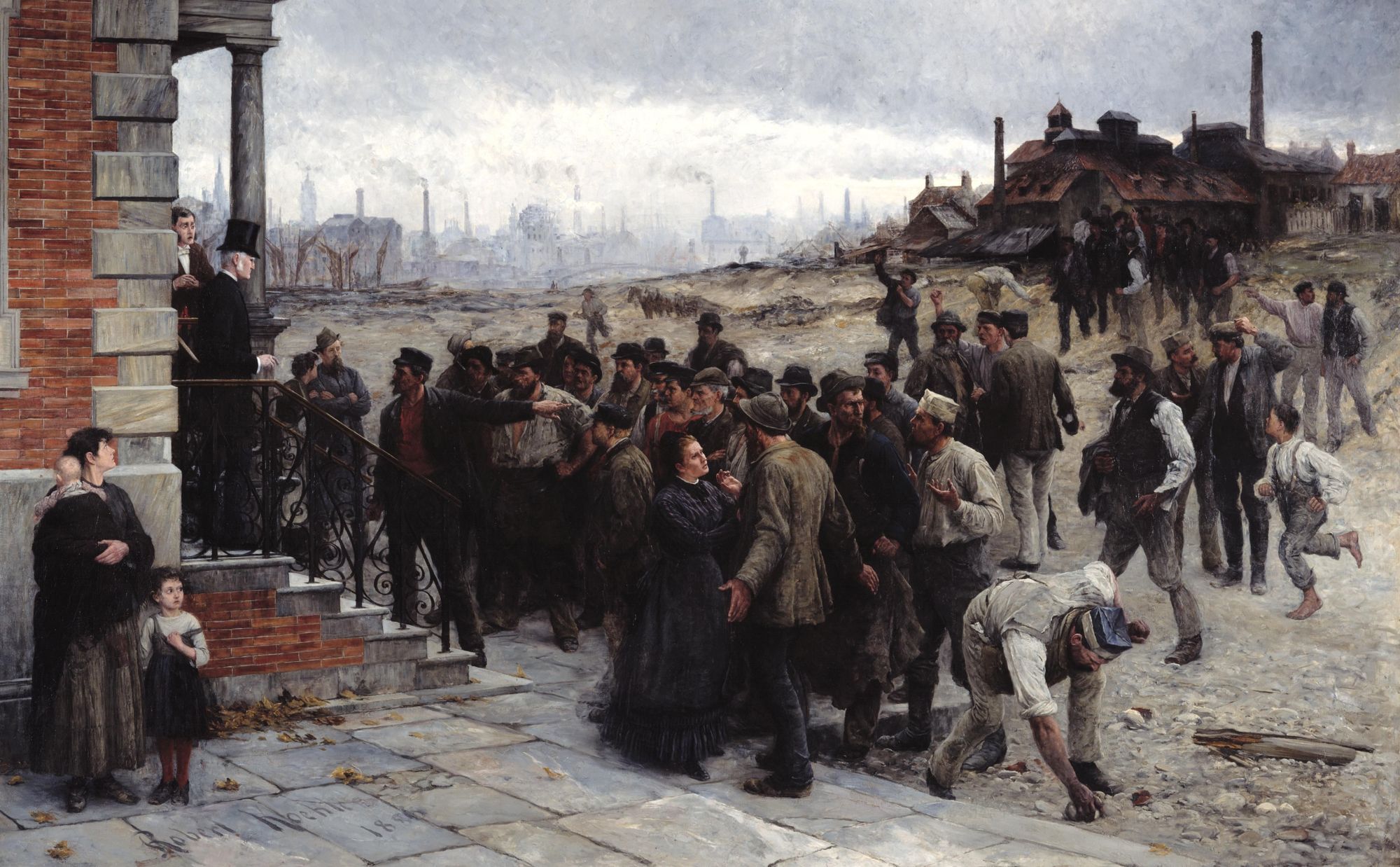There’s a lot more than meets the eye when it comes to the recent wave of strikes at companies such as John Deere, Kellog’s, and others. This all comes at a time when American workers are fed up with harsh working conditions—exacerbated by the pandemic—and stagnant wages. Facing a tight labor market, in which the supply of labor is scarce relative to demand, many workers have begun to assert their power through their unions. What you might not know, though, is that this burst of union activity isn’t limited to strikes. There are major shakeups or potential shakeups within two of the country’s largest unions: the United Auto Workers (UAW) and the International Brotherhood of Teamsters (IBT).
To understand the internal struggles at UAW and the IBT, some context might be helpful. In the United States, unions are often highly centralized bureaucracies. When it comes time for a union to negotiate a contract, highly paid professional staff—rather than general membership, or leaders elected directly by the membership—are responsible for hammering out a deal with employers. Furthermore, the bureaucratic core is separate from the rank and file and makes decisions from the top-down.
There’s a direct line between these top-down structures and the issues that have brought workers out to the picket line in recent months. One example we can see of how the rank and file differs from union officials is in tiered wage systems, which preserve current workers’ pay but set lower compensation for new workers, weakening collective bargaining by dividing the labor force. Modern union leadership has allowed for the growth of tiered wages, to the dissatisfaction of membership.
But a new movement is on the rise in union organizing, and it’s been a major factor in the shake-ups at UAW and the ITB, as well as the rejection of multiple labor-management settlements to end the John Deere strike. “Rank and File” organizing is a movement within unions, defined by the principle that the direction and decision-making of a union should ultimately fall to its members, the workers it represents. This school of thought also believes that general members should actively compete for elected leadership positions rather than leaving those roles to highly-paid professionals.
The rank and file movement is a major factor in ongoing intra-union turmoil. In this year's IBT elections, for example, Teamsters United, a rank and file party within the IBT, won a major victory over incumbents who had led the union since 1998. Their priorities include negotiating more robust contracts for their membership, including pay raises and the elimination of tiered wages. TU also hopes that its leadership at the IBT can serve as a model to workers at non-union companies like Amazon, while also allocating resources for unionization campaigns at those companies.
But the Teamsters aren’t the only union to see a major shakeup. The UAW, which recently saw a referendum to change its voting system, has also been a locus of the rank and file movement. The call for the referendum in UAW was led by a rank and file movement called “One Member, One Vote.” Previously, UAW had a representational system for electing its executive board, not unlike the US Electoral College. That allowed the Administrative Caucus, a party within UAW, to control the board for 70 years. But graduate student workers at Columbia University and Harvard University have organized themselves under UAW, and now represent a fifth of UAW’s membership. Their successful agitation, as well as the conviction of 16 UAW leaders on corruption charges, helped to put a referendum to introduce a popular vote for the UAW executive board on the table. On December 1st, the referendum succeeded, and with it the likelihood of a leadership overhaul in the next elections.
These changes are examples of behind-the-scenes wins for Union Democracy, but they’re also representative of a general wave of change within unions, and organizing that has been ongoing. In addition to the examples in the introduction recently, the first corporate Starbucks organized in Buffalo, and a re-vote to be held in Bessemer, against Amazon shows other big potential.
Truly democratic unions serve to strengthen democracy overall. They show us how deeply we must engage to give life to flourishing democratic spaces. Bureaucratization and technocracy may be facts of modern life, but the internal tensions within American labor unions are indicative of the fact that centralized structures can be corrosive to the spirit of democracy.
No matter how much an institution is designed to serve its constituent parts, they may often go astray. Democracy is an active thing—it requires meetings, discussions, and compromise. Sometimes too it requires action.
Subscribe to SpectaclesNoah Griffith-Rosenberger is a graduate of Kenyon College, where he was involved in an effort to organize the first undergraduate student workers union, KSWOC. The effort is still ongoing, but the importance of unions remains close to his heart.
For more on how unions generally strengthen democratic health, see Harry's Insight from a bit ago:




Comments
Join the conversation